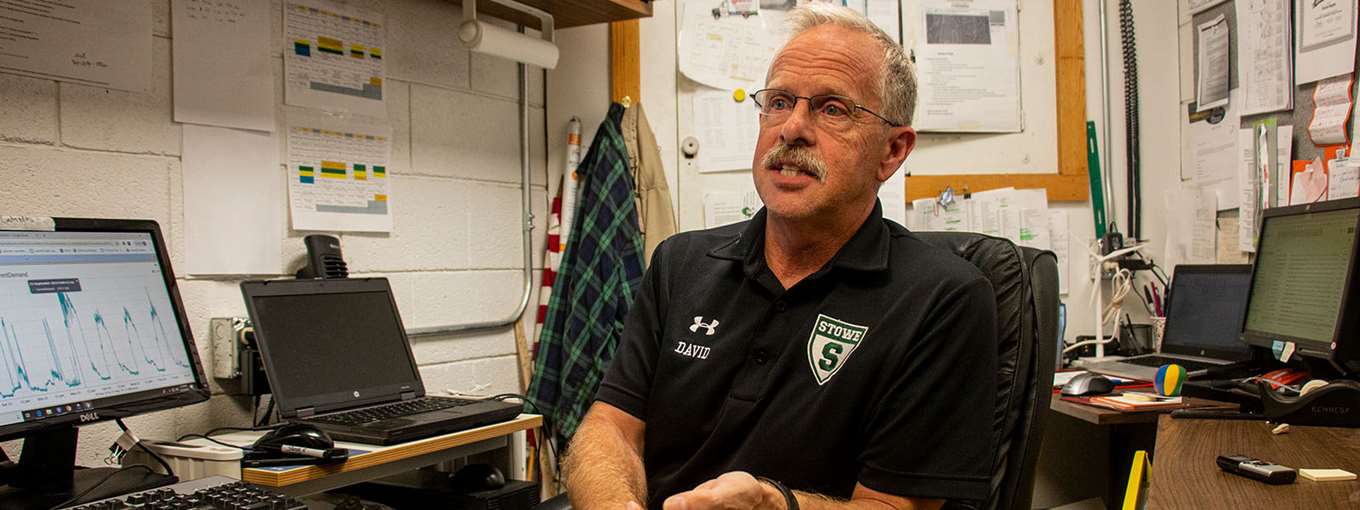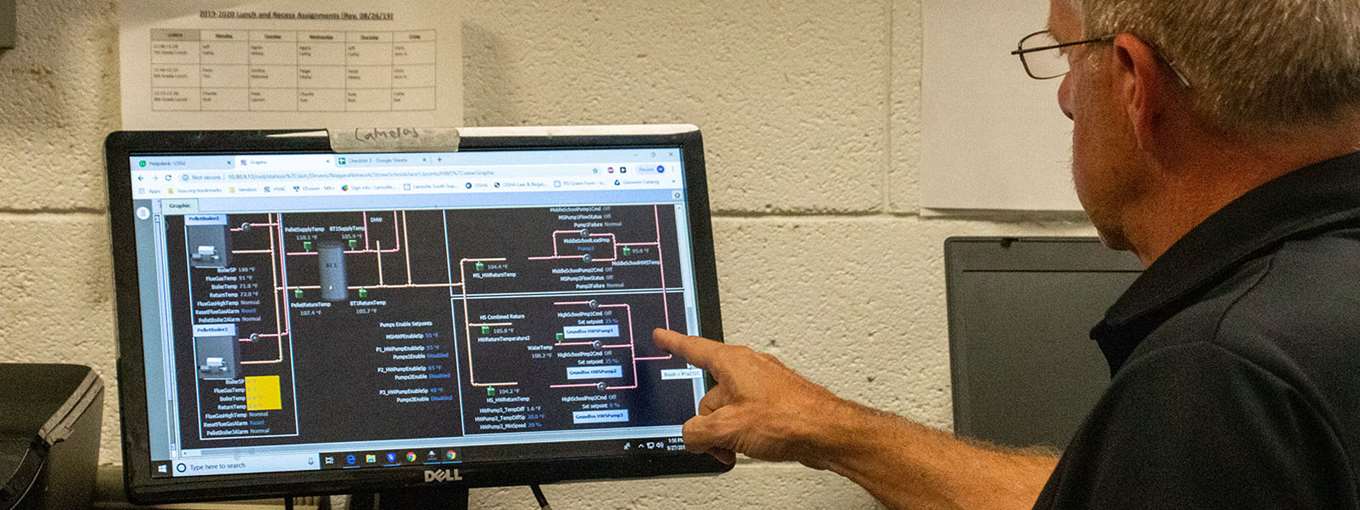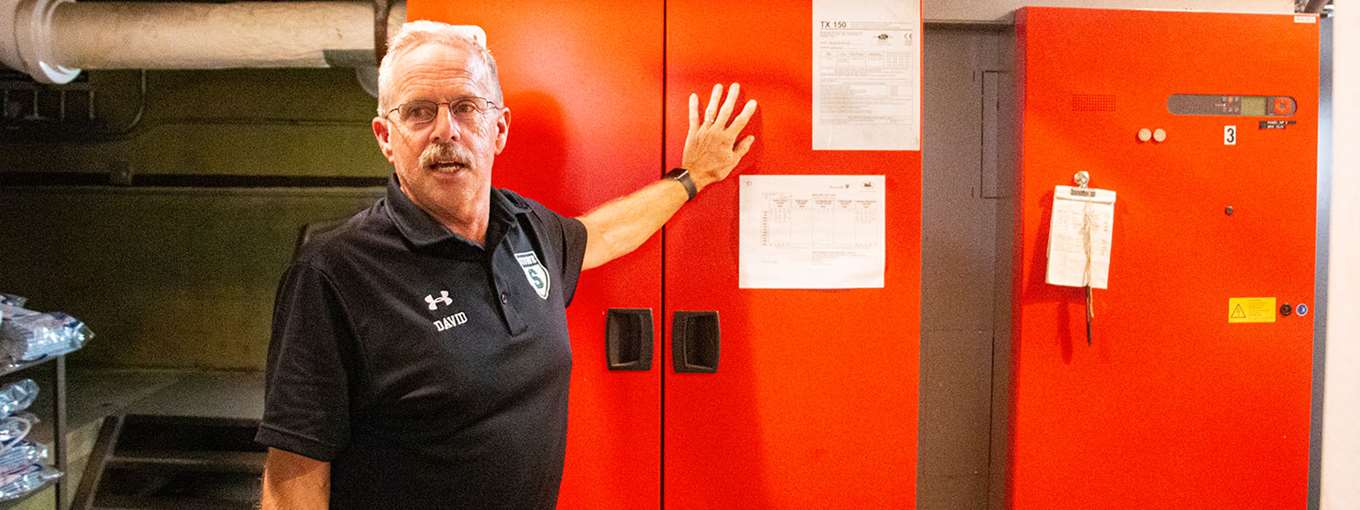Control optimizations get A+ results at Stowe High School
Although the similarities may not be immediately obvious, there’s a great deal of overlap between maintaining and optimizing a facility and teaching high schoolers. Both require patience, planning, and the right systems to succeed. This was a lesson David Bullis, Facilities Director for Stowe District School discovered shortly after starting his job there in 2017.
During the school year, nearly 450 students attend classes at Stowe High School. But during the summer and weekends, the hallways and classrooms are mostly empty. Whether or not school is in session, Dave and his facilities team have about 153,000 square feet to maintain efficiently. From past work experiences in larger facilities, Dave knew immediately that the size of the utility bills and the energy usage were not in line with one another. His experience in other jobs also meant that one of his first calls was to Efficiency Vermont for help. Together, we got to work on a project to make improvements.
“I have worked with Efficiency Vermont in other jobs I've had, and Efficiency Vermont was one of my first calls when I got here. We did some great things here because of the incentives from Efficiency Vermont.”
According to the American Council of Energy Efficient Economy (ACEEE), “existing building commissioning" is “a systematic process for identifying and implementing operational and maintenance improvements in a building to ensure continued good performance over time.”
Some fundamental benefits of existing building commissioning:
- reduced operating costs driven by energy savings
- better equipment performance
- an increase in net operating income
- fewer occupant complaints
- building managers can better operate building systems.
While there was a building automation system (used for controlling processes or machines) in place at Stowe High School, it had not been well-utilized. This was a great chance to update and optimize. That’s when Dave reached out to Control Technologies, Inc. (CTI) and Nick Rock, a Building Performance Engineer, to help reduce energy and improve the operation of the HVAC equipment and Building Automation System (BAS). They also added a mobile app so that the systems can even be monitored and controlled from Dave’s phone. Soon, the team was able to see trends and spot spikes in usage.
“The team effort we had between CTI, Stowe, and Efficiency Vermont helped make for a massively successful project that we hope we can reproduce with other facilities throughout Vermont.”
Now that David is connected to the building and its energy use from his desk and phone, he can effectively manage the equipment at the school. Equipment as varied as pumps, variable frequency drives, roof top HVAC units, wood pellet boilers, fans and ventilation equipment, and hot water systems are available at his fingertips.
One example of how the controls system works well is on snow days. In a Vermont winter, it’s likely there are several days when school closes due to inclement weather. In years past, no one let the building know that school was closed! That meant that the heating and other energy using systems would run as if the building was occupied by hundreds of students and staff. Now, there is a setting for snow days and the school avoids using energy that is not needed.
“Without controllers it’s either running or it’s not. So, it’s huge to be able to track the usage and see what is going on.”
Another example of a simple change with a big pay-off: the team was able to see that too much energy was being used to heat a 1,000-gallon water tank in the summer, when the need for hot water is very low. The school had previously used a 511,000 BTU pellet boiler for this task, which was an inefficient use of that system. As a solution, the school purchased a high-capacity heat pump hot water heater. This meets the school’s hot water need in summer and saves a bundle on wood pellets and electricity.
According to Dave, “We hit a home run! The electric, oil, and pellet bills went down and the rebates from the savings went back to the school. Labor costs also dropped. Less time spent on maintenance when the equipment isn’t being used as often, a lot less time is spent on trouble-shooting an issue with the system.”
Since beginning the commissioning, the school has reduced their electric energy use by more than 25%. Electric savings of about 150,900kWh will save the school $16,500 a year. The savings didn’t stop with the electricity, there was a 26% reduction in the school’s wood pellet usage, which results in $12,000 in savings a year. A+ results in anyone’s book!


